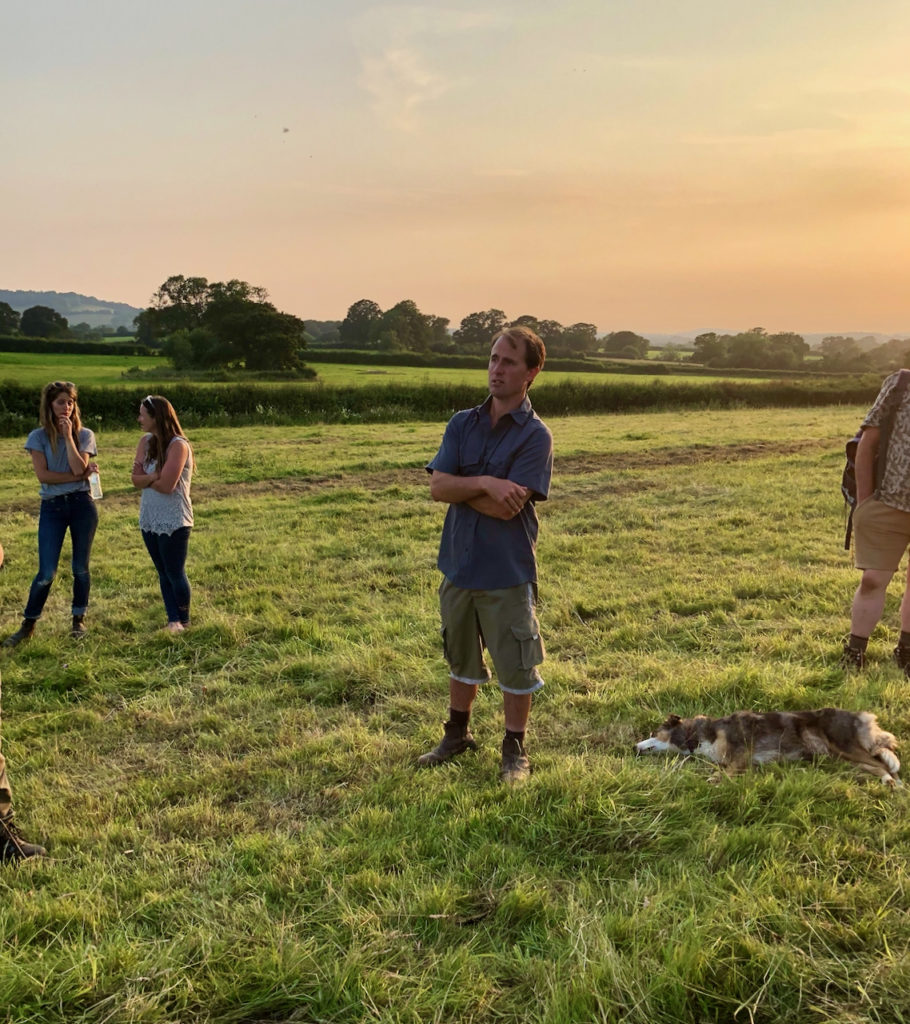
The final walk for this year’s Soil Farmer of the Year series was with Sam Vincent at Rookery Farm in Dorset who was recognised this year as our Livestock Soil Farmer winner. We are very grateful to Sam for fitting the walk in during calving, which is much appreciated! The farm is 130 ha which is all down to permanent pasture with no reseeding for the last 15 years, following some experimental direct drilling which yielded mixed results. The grazing platform for the milkers occupies around 45-50ha and the rest of designated for youngstock grazing and making winter forage.
Sam’s transitioned his 100 cow dairy farm to organic in 2018, following a breakdown of TB which had meant a reduction in cow numbers from his formerly fairly intensive system.
“Prior to the TB breakdown, I had considered going organic, because we weren’t using a huge amount of inputs” Sam explained, “but once our cow numbers were lower and following a couple of years where we had cut our Nitrogen back dramatically (from 120kg to 35kg) and seen an increase in grass yields we felt ready to make the jump.”
The farm came out of conversion last year and now Sam supplies Arla on an organic milk contract as well as being a member of the Pasture Fed Livestock Association for his youngstock operations and any dairy beef that are sold. Traditionally the herd was on an all year round calving pattern, however this has now changed to a split block with half the herd calving in Feb – April, and then other half August / October. Now the herd calves in late summer in one block with the aim to gradually bring the calving earlier in the summer, ideally in May and June. The youngstock graze the fields that are further away from the dairy and that provides an opportunity to cycle the nutrients around the farm. The dairy is based on the site here and then there is another farm up the road where the youngstock are kept in the winter.
On grazing
“We’ve certainly changed the way that we are grazing now,”
Sam explained. “In the past we were going back and back to the same fields, eating everything and leaving nothing. Now we try and lengthen our rotations as opposed to keeping the grass continually short; some people call this mob grazing.”
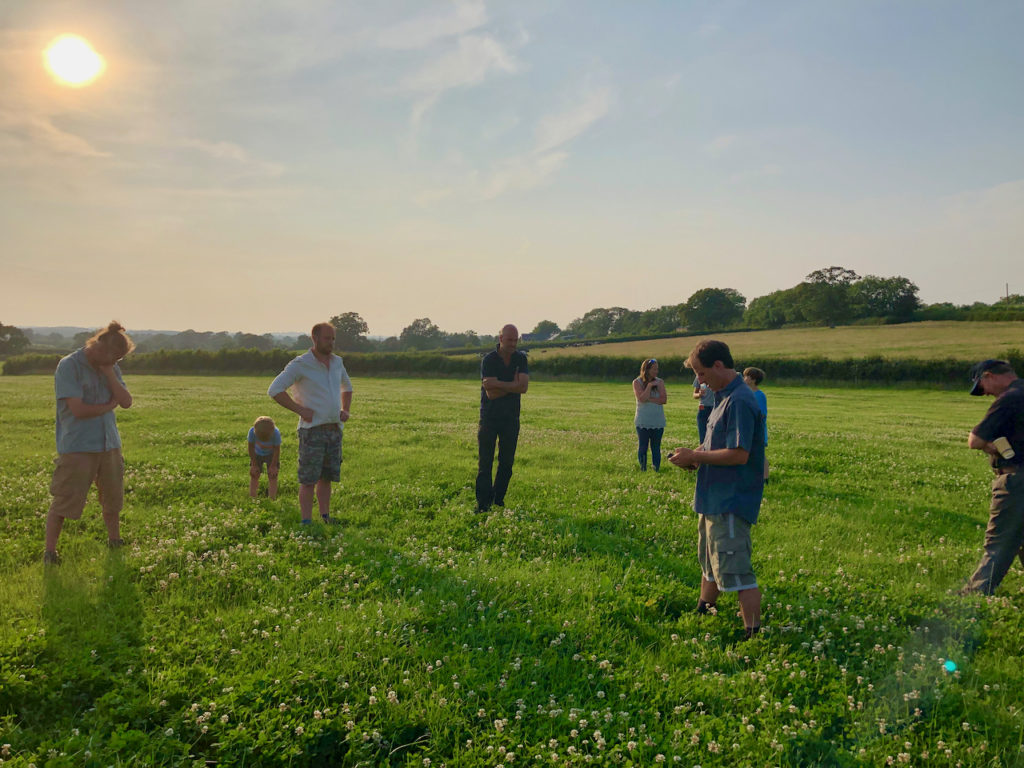
The cattle are predominantly British Friesian, which seems to suit the farm, although Sam has experimented with other breeds in the past, including New Zealand Black and Whites. “We needed a cow that has longevity, and will work on our system,” explains Sam. The milking herd are fed a small amount of concentrates (between 6-800kg) and yield on average 5,500 litres. Due to the losses from the herd Sam is looking to build the milkers back up in numbers again to be more like 100, currently he is milking around 85.
“The plan next year is to front load the summer block with some older heifers that we’ve had this year and the fresh heifers we’ve got coming on that will be ready to serve mid September this year. However there is a group in with the bull now which will calve April – May next year. Last year we had a few issues with the heifers, they weren’t on a great rising plane of nutrition and then we kept them out too late and it didn’t pay off, but that is how you learn. We’ve currently got 17 in with a Friesian bull and the idea is to push them all up next year and sell the surplus and then get the dairy herd back up to around 100 and see where we are then the following year.”

The first field we visited was a field of pasture that had been last cut for silage at the end of June. Discussions ensued about the need for pre mowing or topping to manage forage quantity, Sam is not keen on doing either of these operations, “the field and grass stays as it is unless it would benefit from being mown, then its baled up and put in the clamp.” The field that we walked through had some interesting features in it, including one half of the field which had significantly more clover than the remaining area. The fields were reseeded a long time ago, using mixtures that were predominantly ryegrass. “It almost set some of the fields back in hindsight,” Sam explains,
“We should have done things a little bit differently, but that’s how you learn.“
The field in front has never been reseeded, but the one over there has, and you can tell the difference when the cows are grazing.”
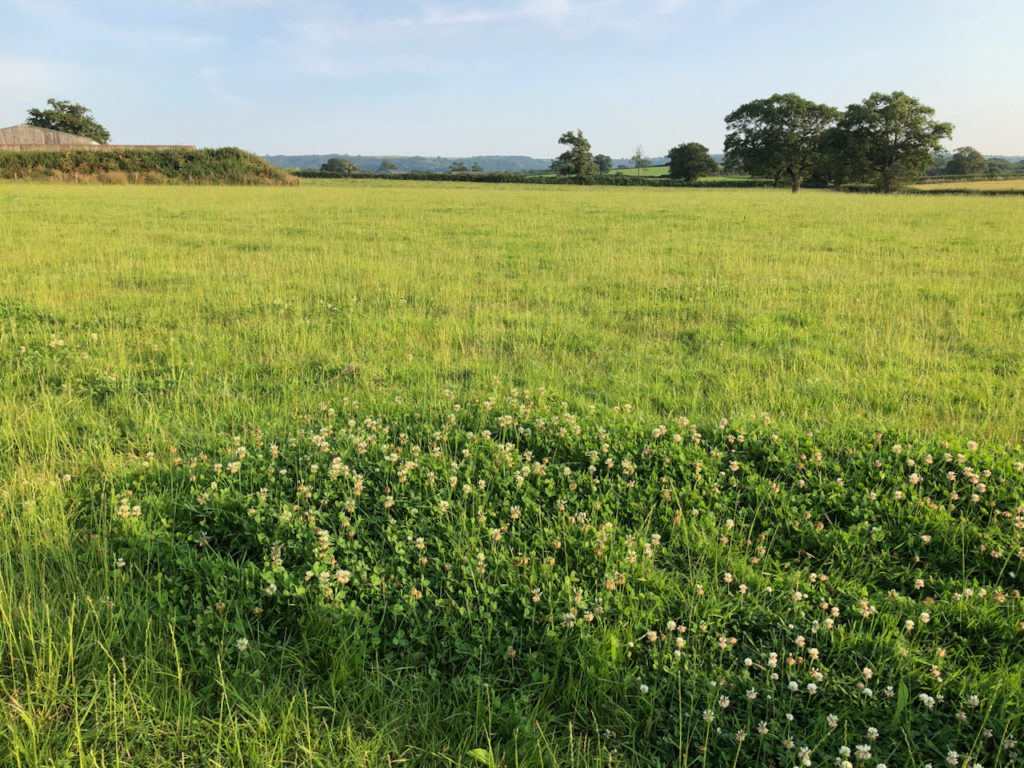
The plan of where to put the cows next is now dependent on the stage of growth and pasture quality, rather than following a set plan. Sam explains, “Originally the cows were supposed to be grazing in the fields across the hill at the moment, however I had to weigh up whether I put them over there for a week and then get them eating on regrowth, or put them over there for 10-14 days and then have a lot more grass in front of them just in case it was going to carry on staying dry. I’d rather stay on a 40 day plus rotation at the moment, rather than a 30.”
The increased length of rotation is something that Sam sees is a measure of success.
“By increasing the rotation length to 50-60 days, and leaving higher covers we are seeing diversity within the pastures which is as a result of management.”
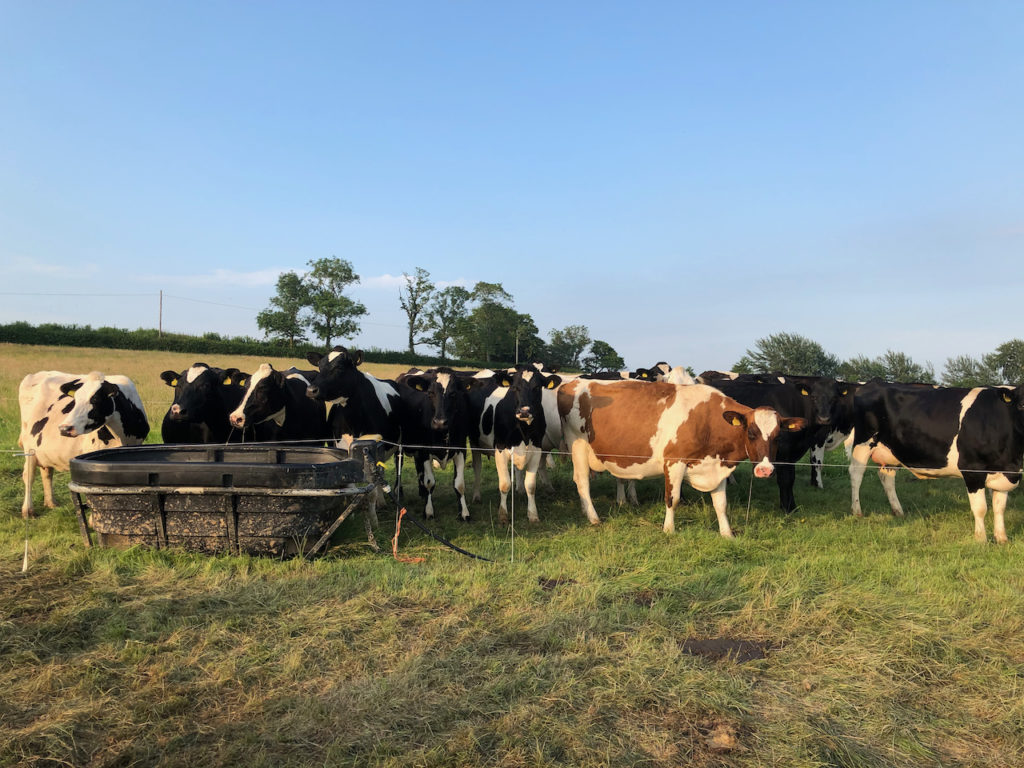
We then walked up to see the cows from the milking herd. The cattle are moved twice daily on 12 hour moves and have a back fence. There were lots of discussions and questions from the farmers about the design of the water system and how portable it was. The trough design that Sam has works quite well and was made for him and is on a skid which can be moved daily using the buggy. Sam’s aspiration is to gradually move all the farm over onto mobile troughs so that he has ultimate flexibility and can be responsive in terms of grassland management.
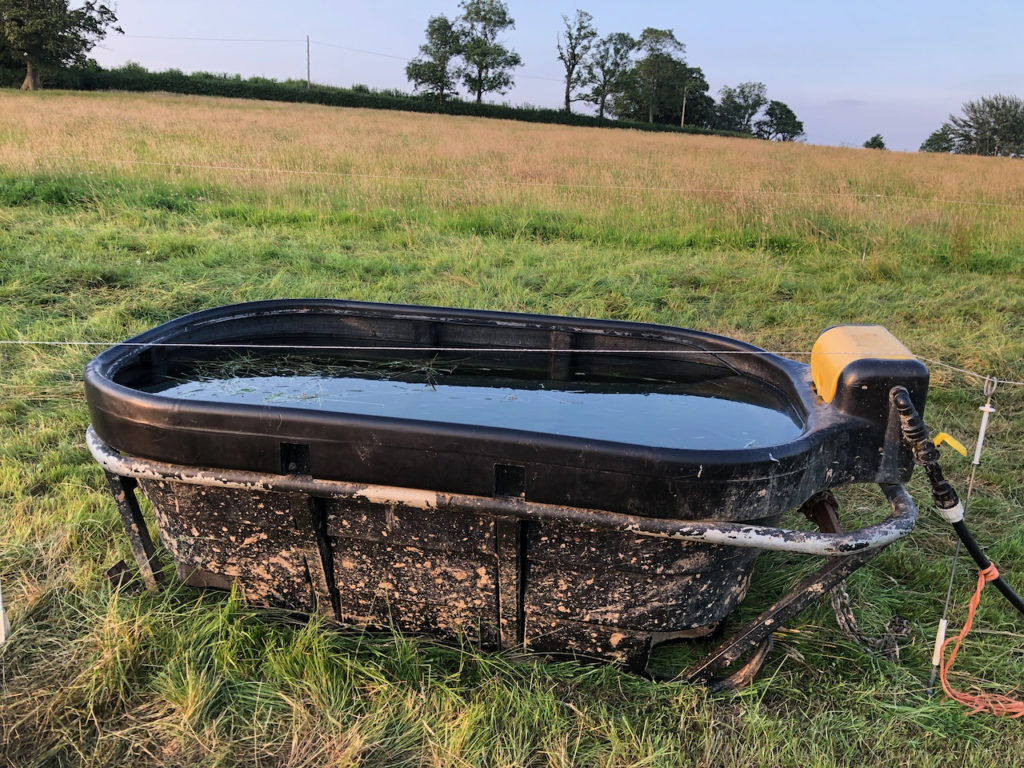
“The grass allocation is based on the grass covers and the cows,” Sam explains, “we sample the grass and plate meter so we have a good understanding not just of the covers but also the quality.” Last year Sam experimented with satellite measurement of the grass, which is something that needs a little more development but is a useful future tool.
Sam has noticed the diversity in the pasture species start to return since the transition over to this management system as well as the reduction in the fertiliser rates. All the fields vary a little, but we get different species come up depending on the seasons and the conditions. In March / April there is a lot of foxtail, but as the season progresses, its amazing what you get, including tufted vetches and trefoils. The field that we were standing in hadn’t had any silage / hay taken off it since Sam has been managing it, its just had grazing. Sam stressed the importance of managing the ground using the cattle and ensuring that the numbers and paddock sizes are matched. This varies throughout the year and Sam’s risk period is often early spring when the ground can be a bit ‘tender’ and as such, higher residuals and lower stocking rates are left to protect the soil and minimise structural damage and poaching.
“Some people think, in order to get diverse leys you need to rip it all up and start again, but that isn’t the case. We have fields that haven’t been reseeded but have still got diversity including trefoils and native red clover. If you reseed with ryegrass, the species that come back once the ryegrass dies back is weeds, usually annual meadowgrass and other non productive species.”
There were questions around the number of cows and how well the cow numbers matched the grass covers. Sam explained that the dairy numbers are dependent on how long they want to keep the youngstock and beef cattle. All of the youngstock are weighed regularly so that growth rates can be monitored and they have no concentrates. The calves are fed whole milk and once they are in a small group they are turned out and fed milk through a 50 teat feeder as well as starting to graze.

The youngstock are moved once per day but have a back latch system and half way through the day the latch opens and they are into fresh grass. The stock have taken to the system well and Sam doesn’t get many problems. By allowing the stock to graze across the farm, Sam is seeing the benefits in terms of improved grass production.
“If we let the stock graze it then we don’t have to haul the muck out there. We cut fields and graze fields in a rotation rather than continually cutting all the time, the flexibility needs to be there to decide based on grass condition and stocking. The fields at the other end of the farm benefit a lot from the flexilblilty, the soils are a lot shallower. We cut here as well. FYM is spread in April on ground that had been grazed and spread on ground which is cut for silage later after cutting. All manure stores are covered which leaves very little dirty water to spread by irrigation. We normally cut very similar height as what the cows graze which makes for an adaptable system. Quite flexible, if you have a field that you were going to cut but the weather turns wet then it isn’t the end of the world, you can simply go back and graze it. The cows are normally out grazing from early March until the end of November. The youngstock stay out a bit longer and we outwinter the dairy beef on a deferred grazing system. The fields that are selected are the driest fields on the farm and then they are closed off early summer and then line the bales out across the field. “It’s a very simple system but it works for us,”
The farm has installed over 4000 railways sleepers to make cow tracks which mean that the farm is much more accessible in terms of grazing infrastructure and the benefits are visible in the pastures.
On weed management
Sam isn’t too bothered about weeds, he sees them more as an indication of a soil issue that he tries to solve using his cattle. Traditionally this farm had a lot of thistles on it, but they are starting to retreat and the ones that are around are looking less prolific.
On Soil health
The soils vary on the farm with some being heavier with a higher clay content and others more silty. The risk period for these soils is early season with risks of structural damage. For Sam what holds the soil back is tractor movement, so the more that the cows can do the work the better. “We don’t want to top and roll, at the end of the day its 4 wheels that are going along and causing damange. If you’ve got a rotation, with cattle who are utilising the pasture, then you don’t need to be sat on the tractor.”
Other enterprises
Sam also has pigs which he uses in the cattle housing to turn over the FYM and to help with the composting process. He adds some corn to the material in the sheds and then the pigs are turned into it to mix it all up and compost it. This process takes between 6-8 weeks, which is how long the corn lasts within the system. If the pigs are in for any longer then they will need supplementary feeding. A future aim to try and set up a Bokashi type system to enable further composting of the manure.
The final question was about the business benefits that Sam was experiencing due to his transition to this system. He explained that although the cow yields dropped from 6-5000l, a lot of concentrates were taken out leading to better margins. “Milk from forage percentage is high and milk solids have gone up. Not having inputs makes an impact on beef / dairy. Organic milk price means that the impact has been minimal. The business is a lot more stable.
“Before we went rushing around, we’ve now got time to stop and think – feel better. We are more resilient and sustainable now.”
The farm walk was absolutely fascinating and it was brilliant to see how Sam is pushing boundaries of what is possible in a pasture based organic dairy system. Thank you to Sam and the team at Rookery Farm for a brilliant evening.
